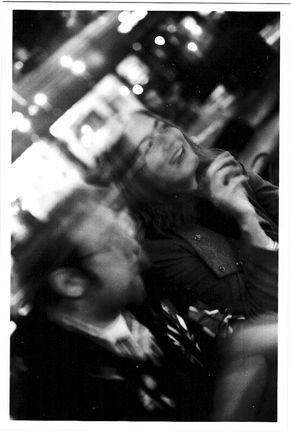On the undesigned vs the aesthetic.

I’ve been trying to perfect my latté art for months. Like anything that looks really easy, it’s not.
In this interview, David Schomer of Seattle’s Vivace talks about espresso, aesthetics, and precise measurements. Before becoming arguably the Emerald City’s most respected purveyor of artisanal espresso, he was a metrologist at a Boeing electronics lab. No surprise, really, considering the chemistry and physics that go into a fine cup of espresso. His exacting techniques were borne out of mechanical frustration:
At first, he was frustrated by his inability to get consistent espresso shots — an unreliable result to his scientist’s mind. He tinkered with all sorts of variables: the grind, the machine, the bean quality. In 1994, he targeted the temperature, threading a wire probe inside the machine’s chamber and down through the packed grinds. He found variations of up to eight degrees and began to work for consistent temperatures.
He also laments the lack of scientific acumen and aesthetic appreciation of most coffee makers (people who make crappy coffee don’t deserve the title of “barista”):
Schomer’s success lies in mixing a rigorous reliance on science — this is, after all, a man who describes crema as a “polyphasic colloidal foam” — with a demand for aesthetics. In his mind, most coffee makers can manage one or the other, but not both. “If espresso professionals were heart surgeons,” he argues, “three-fourths of us would die on the table.”
On my way to work this morning, chatting with a carpool partner, we were speaking about design. About the design and undesign of engineered things, inspired by a discussion around the simple elegance of fixed-gear bicycles and wooden sculls. About the aesthetics of cycling and rowing enhanced by a beautiful machine. And how some things can seem undesigned, but a discerning eye knows they aren’t because they’re still aesthetic (which makes me think of Readability and Instapaper). He provided a food analogy that I found so refreshing and appropriate. He bemoaned the fact that some people just want their information given to them and pushed to us straight (yes, you, Google), no formatting or aesthetics required.
But with food, most people would never stand for that. If we ingested our food the way engineers propose we ingest our information, we’d all just take our meals via pills and our liquids via IV. No texture, no color, no emotion or culture. Can you imagine food without aesthetics?
Perhaps it’s this aesthetic more than I realize that makes me (and other designers – have you ever noticed it’s kind of a designer thing?) so fanatic about espresso.